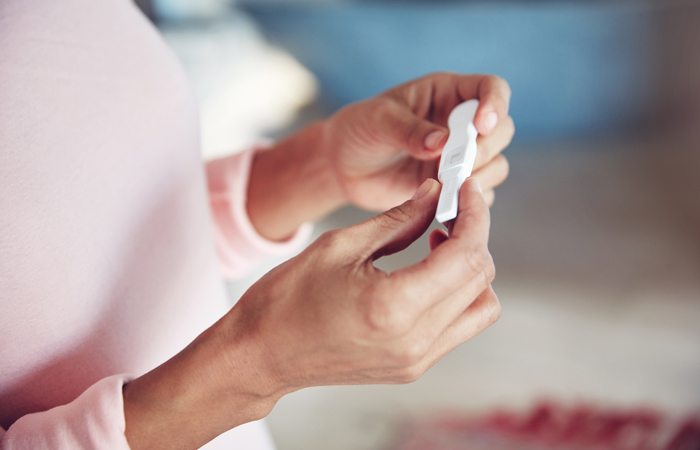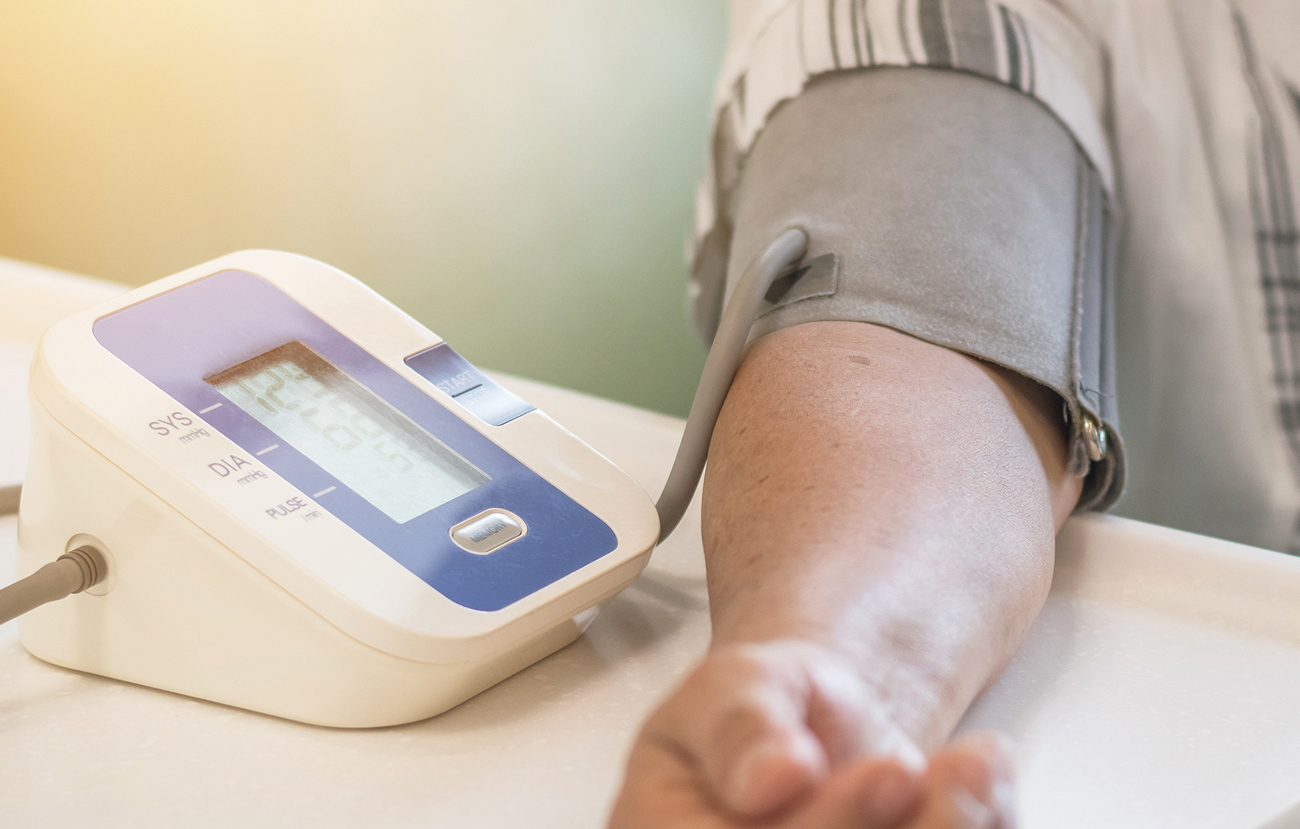At your service
In Conditions
Follow this topic
Bookmark
Record learning outcomes
Pharmacy teams are helping to improve the health of communities and reduce pressure on other health providers by offering health screening services but what makes these a successful addition to a pharmacy?

Public Health England (PHE) reports a year-on-year increase in the number of people receiving their NHS Health Check, with many local authorities now commissioning the service from community pharmacies. But this service, which invites anyone aged 40-74 who does not have a pre-existing cardiovascular condition to have a health ‘MOT’, is not the only way in which pharmacies are playing a key part in supporting people in their communities to stay well and manage their health.
Pharmacies are now involved in a whole host of screening services, from pharmacy-based tests for HIV and diabetes, to over-the-counter (OTC) home testing kits for pregnancy, glucose and fertility.
The Priory Community Pharmacy in Dudley, an Alphega Pharmacy member, proactively recruits patients into the NHS Health Check when giving out prescriptions, and when customers come for OTC medicines, but it doesn’t end there. Superintendent pharmacist Olutayo Arikawe says that all staff make every conversation count. “We listen to our customers so we can proactively recruit patients and offer them services that are beneficial to them over and above what they came in for,” she explains.
Ensuring success
When it comes to deciding which services to offer in your pharmacy, there are several things to consider. “It has to be something people want,” says pharmacist and Royal Pharmaceutical Society president Ash Soni. “You have to be able to market it, and staff must be trained to deliver it because if any one of these elements is missing, it won’t happen.”
Patrick Kirby, managing director of 1st Health Products Ltd, which supplies a range of self-testing kits to pharmacy, says it’s important to start by identifying a market for the service and then understanding the demographic. “Different groups of people need different types of information delivered in different ways,” he says. “For example, the under-30s prefer to engage digitally, whereas older people prefer printed materials. Also remember that both sides of the coin are important – a high percentage of those doing a pregnancy test want a positive result, but many people want a negative, so pharmacy staff should be prepared to give advice and information to both.”
Olutayo agrees that promotion is key. “The success of most services is hinged on people knowing that you provide them,” she says. To ensure that this happens, Olutayo’s staff take the healthy living pharmacy concept out into the community. “We don’t wait for people to come to us,” she explains. “We go out into workplaces, fire stations, community centres, town centres, colleges, children’s centres, pubs, the library, supermarkets and gyms to promote our services.”
Another key to successful services is staff training. “It is important that all pharmacists, including locums, and staff are trained and motivated to provide services,” says Olutayo. “Relevant staff should also demonstrate that they have kept themselves up-to-date such as by attending yearly or in-store updates.”
From a customer point of view, the pharmacy environment must appear professional and Olutayo believes that in this way, confidence starts with the image people see when they enter the consultation room. “The pharmacy should have an uncluttered consultation room so the patient is comfortable and confident of the service they are being provided with,” she says.
It’s also important to manage people’s expectations of screening, Patrick points out, as needing a test is the beginning, rather than the end of the process. “It works in two ways,” he says. “It either gives people the inclination to go off and get something done about a health issue, or it prompts them to see whether they are predisposed to something. It’s a call to action, so be prepared to help people after they have done a test.” Patrick adds that screening tests produce slightly higher false positives, but a low level of false negatives. “Nothing is 100 per cent accurate all of the time,” he says.
One way to ensure the results of tests carried out in the pharmacy are as accurate as possible is regular calibration of equipment. Andrew Anderson, pharmacy spokesperson at PHE, says: “When carrying out tests, it is very important that the equipment is calibrated appropriately and that staff are trained not only to use the equipment properly but also to interpret the results, communicate the results to the person and, if necessary, to another healthcare professional, such as a GP.”
Maintaining the service
Setting up a screening service is one thing, but maintaining it has its own challenges. Ash says it makes a difference whether services are private or funded by the NHS because people may want a service, but if it costs too much, they won’t have it. “Then there is the question of sustainability,” he adds. “Have you got enough people who will continue to need it? Your service may be great, but not if it only involves testing once every couple of years or has a limited market.”
Having and motivating the right staff to carry out the screening can also be a challenge. “For example”, says Olutayo, “for the NHS Health Check or diabetes screening, not everybody likes to see or draw out blood.” She also suggests that staff need to be engaged and able to see the benefits of offering the service to the community beyond monetary terms.
Time is often another issue. “There is always a lot going on in pharmacies and it can sometimes be challenging to find the time for extra training and training updates,” says Olutayo. “Some of our training is done after 7pm so that all pharmacies in the area will be able to attend, but it can still be difficult to get some staff to attend due to personal circumstances.”
Patrick adds that from the patient’s point of view, there may be an embarrassment factor to overcome too. “Women get a lot of screening from an early age because of their biology, so they are less embarrassed than men about health issues and concerns,” he says. “On the other hand, by the age of 26, the average man will probably have been to hospital for trauma or an accident and then won’t see his GP again until his early 40s, which is why men are often afraid of anything to do with their health. It is up to counter staff to provide an extra layer of calm, confidence and knowledge to help everyone access and make the most of the services they need.”
Hits and misses
You may find that with some services, it is better to target specific patients rather than offering them on an ad hoc basis. “For example, if you are testing for sickle cell anaemia, you need to target the Afro-Caribbean population, as this is irrelevant to others,” says Ash. “Similarly, there is no point aiming sexual health screening at people in their 50s, but it is ideal for the young teens to mid-20s group.”
When it comes to deciding whether to offer private or NHS services, Patrick says it’s crucial to know the demographics of where your pharmacy is. “AB1 areas are more likely to take up screening services, especially if they have to be paid for by the customer, so you have to be realistic in targeting your services,” he says.
The Priory Community Pharmacy uses a customer suggestion box and a stakeholder group composed of local councillors, members of the Priory Community Association, the public health team, GPs, nurses and pharmacy users to decide which services are wanted and needed by the community.
Reaching out
One concern that many pharmacies have is that screening is only taken up by the ‘worried well’. However, according to Patrick, while these customers will always be in the mix, there are many drivers that encourage others to go for screening, such as familial events, friends or colleagues mentioning health concerns, or people simply responding to a public health campaign or something they have read that sparks them to do something.
Ash points out that while those who may need a service are often more difficult to get to, there are ways and means of doing it. “For example”, he says, “with cholesterol screening, there is a cohort which needs it but won’t think of paying for it. However, if you can explain why it is worthwhile having it done then they are likely to pay. If you can demonstrate value then people will pay.”
Olutayo says she promotes the NHS Health Check to her customers by describing it as a ‘body MOT’. She explains: “I encourage my customers to have one as they wouldn’t drive their car without an MOT, but the person driving the car is more important.”
Testing at home
In addition to the screening services that your pharmacy can provide, there are a huge range of home testing kits available for various health conditions and concerns, including blood pressure monitoring, diabetes, cholesterol, pregnancy and fertility.
Used in the right way, and with the right advice from pharmacy, these can be useful pointers to professional healthcare advice, but do they really work? Should your customers trust the results, and what advice can you give to people who want to try such tests?
Olutayo believes that home tests empower people to manage their own health. “For example”, she says, “Canestest is a convenient self-test solution that helps people find out whether they are suffering from thrush, BV or another infection, and also helps them to decide which treatment is right for them. This will mean they can be treated in the pharmacy rather than going to their GP.”
However, on the down side, she says: “Using uncalibrated blood glucose or blood pressure testing machines, for example, can result in inaccurate test results, which may get patients worried unnecessarily.”
And while most companies will have tested the instructions and the procedure to ensure their tests are as simple to perform as possible, many people may still find the instructions difficult to follow, as Ash points out: “Home testing kits are great as long as people understand how, when and why they are doing it and that they may get not an absolute result. Similarly, pharmacy staff need to recognise that people do a screen because they have a concern, and then they should be encouraged to come back and see us in the pharmacy for further information and advice about next steps. This may mean a further screen in the pharmacy, either paid-for or not, and a referral on to someone else.”

Merchandising tips
Home testing kits are not always the easiest products to merchandise as it can be tricky to know where best to site them. “Screening is not a category in itself,” says Patrick, “so by concentrating all your home tests in one place in the pharmacy, you are able to build a stronger category. But the flipside of that is missing opportunities to sell products in their own category – for example, putting condoms and pregnancy test together is a natural fit.”
Counter staff also have a role to play in helping customers select the most appropriate products for their needs. “There is no better option in many cases, so screening is the answer,” says Patrick. “But some of these tests are still contentious, so you and your staff have to be able to offer advice and onward referrals if necessary.”
Services that work well

Screening services that work well in a pharmacy environment include:
- Those that benefit from being offered in a convenient location: pharmacy is well placed to provide INR testing for patients taking warfarin. As this has to be done regularly, a convenient location and choice of times is important
- Those prompted by symptoms that are commonly self-medicated: H.pylori testing is well received in pharmacy because of the convenience that comes with not needing an appointment. Triple therapy can be instigated immediately if a patient group directive is in place
- Those that build on existing relationships with patients: pharmacies can undertake hepatitis B and C screening of high-risk individuals, such as injecting drug users, who may already be regular visitors
- Those that raise public awareness and identify risks within populations that are not traditionally regular surgery attendees: alcohol screening in pharmacy can facilitate early identification of patients with a lifestyle that exposes them to increased health risks.
It has to be something people want, you have to be able to market it, and staff must be trained to deliver it
